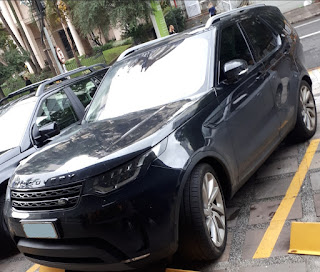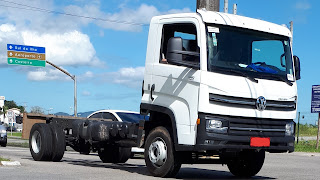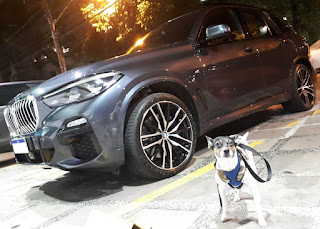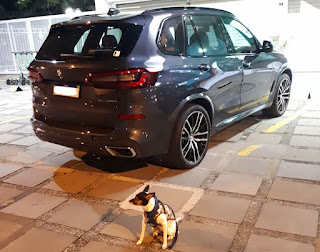Saturday, January 04, 2020
5 reasons why I would not disconsider fitting a motorcycle-type V-Twin engine into some old Subaru
Even though some Subaru models such as the early Outback have a die-hard fanbase who is obsessed with the Boxer engines, it's far from being as perfect as it seemed to be. I must confess I have actually prefered the old-school Volkswagen air-cooled Boxer for a long time, which by the way can have its displacement increased with some performance kits allowing it to get figures similar to the EJ-series Subaru engines. Another kinda controversial option that I would consider to replace a stock EJ-series into a Subaru would be some V-Twin engine such as the ones traditionally fitted into custom/cruiser motorcycles. Among the reasons that would lead me to consider such option, at least 5 can be listed.
1 - fewer parts: since it would have half the amount of cylinders, depending on engine model it will lead to have around half the amount of moving parts, occasionally less than half considering most are either OHV or SOHC while the EJ-series engine had resorted to a DOHC valvetrain for most of its versions.
2 - availability of different displacements allowing enough power and torque: even though it may seem more likely to become underpowered with most of the stock motorcycle engines, there are some within the 1800cc displacement range which would already have enough power, not to mention all the aftermarket parts and even some entire engines usually based on older Harley-Davidson designs even surpassing the 2000cc range.
3 - setting the engine back: this would allow some improvement to the weight bias, since the Boxer only allows a longitudinal fitment ahead of the transmission.
4 - servicing eventually becoming easier: even though it may not be the case for every V-Twin out there, the access for some components such as spark plugs in the EJ-series is kinda hard.
5 - just for the experience: sometimes it's tempting to try some different engine configurations just for the sake of it...
Thursday, January 02, 2020
Diesel engines and downsizing: sometimes not the best approach
Modern generations of light-duty Diesel engines have followed an evolutionary path which departed from their essentially utilitarian roots, reaching a level of refinement comparable to gasoline engines. Disadvantages regarding mostly the specific power and engine speed gave way to such a complexity level that often leads to some questions regarding the extent of benefits obtained from this so-called evolution. It's worth to notice the displacement-biased tax brackets in markets such as the European Union, where Diesel engines ranging from 1600cc to 2400cc have already been heavily penalized and any higher-displacement one becomes too expensive even in some prestige models. It may not seem so harsh on those who could opt for the 2.0L Ingenium turbodiesel instead of the 3.0L V6 AJD-V6 twin-turbo in a Land Rover Discovery 5 as a reference, but there are still objectionable aspects regarding the push toward the downsizing.
While some countries such as the United States simply don't apply a displacement-biased tax scheme, others such as Brazil are amended to exclude certain vehicle classes such as 4WDs and trucks, which could already seem enough to discourage downsizing. Taking as references the 3.0L turbodiesel fitted to the Land Rover Discovery 5 and the inline-4 Cummins ISF3.8 with a single turbocharger usually found in commercial trucks such as the Volkswagen 11.180 Delivery, it's important to look at aspects such as manufacturing costs and ease of maintenance due do the amount of cylinders and valvetrain layout, but even the emissions compliance which is often pointed out favorably to downsizing becomes objectionable. Considering the gross vehicle weight rating for both models, and the gross combined weight rating regarding the Discovery while towing, engine speed differences at peak power and torque ratings won't prevent the larger-displacement ISF3.8 to fare even better at some conditions as it's able to sustain a comfortable cruising speed at a lower RPM. Since the ISF3.8 would be more understressed in a Discovery due to its GVWR only beating the kerb weight of the Volkswagen 11.180 for a margin lower than 10%, plus the trucks's GVWR being around 3 times higher, resorting to some high EGR load and decreasing the AdBlue/DEF consumption proportionately to fuel consumption wouldn't be so troublesome regarding an overall performance and aftertreatment efficiency in the SUV as it would be in the truck. While a smaller-displacement engine operating at a higher speed would be more overstressed, thus requiring a higher AdBlue consumption to keep Nitrogen oxides emissions compliant to the standards enforced.
Another relevant matter regarding how downsizing became pointless is the production of some SUV models from European-based automakers such as the BMW X5 not even taking place within Europe, which could be seen as an opportunity to circumvent the downsizing trend in overseas markets. Since the current generation of the X5 for example is only made in the United States, Thailand, Indonesia and India, it's worth to consider the different tax structures which may lead the downsizing to be not so desirable in the United States as it would be in Thailand for example. However, it's still relevant to look at a more modest amount of cylinders and valvetrain layout, which also have some advantages often neglected amid the attempts to make Diesel engines closer to the feeling of their gasoline counterparts instead of taking benefit from their efficiency-enhanced nature.
While some countries such as the United States simply don't apply a displacement-biased tax scheme, others such as Brazil are amended to exclude certain vehicle classes such as 4WDs and trucks, which could already seem enough to discourage downsizing. Taking as references the 3.0L turbodiesel fitted to the Land Rover Discovery 5 and the inline-4 Cummins ISF3.8 with a single turbocharger usually found in commercial trucks such as the Volkswagen 11.180 Delivery, it's important to look at aspects such as manufacturing costs and ease of maintenance due do the amount of cylinders and valvetrain layout, but even the emissions compliance which is often pointed out favorably to downsizing becomes objectionable. Considering the gross vehicle weight rating for both models, and the gross combined weight rating regarding the Discovery while towing, engine speed differences at peak power and torque ratings won't prevent the larger-displacement ISF3.8 to fare even better at some conditions as it's able to sustain a comfortable cruising speed at a lower RPM. Since the ISF3.8 would be more understressed in a Discovery due to its GVWR only beating the kerb weight of the Volkswagen 11.180 for a margin lower than 10%, plus the trucks's GVWR being around 3 times higher, resorting to some high EGR load and decreasing the AdBlue/DEF consumption proportionately to fuel consumption wouldn't be so troublesome regarding an overall performance and aftertreatment efficiency in the SUV as it would be in the truck. While a smaller-displacement engine operating at a higher speed would be more overstressed, thus requiring a higher AdBlue consumption to keep Nitrogen oxides emissions compliant to the standards enforced.
Another relevant matter regarding how downsizing became pointless is the production of some SUV models from European-based automakers such as the BMW X5 not even taking place within Europe, which could be seen as an opportunity to circumvent the downsizing trend in overseas markets. Since the current generation of the X5 for example is only made in the United States, Thailand, Indonesia and India, it's worth to consider the different tax structures which may lead the downsizing to be not so desirable in the United States as it would be in Thailand for example. However, it's still relevant to look at a more modest amount of cylinders and valvetrain layout, which also have some advantages often neglected amid the attempts to make Diesel engines closer to the feeling of their gasoline counterparts instead of taking benefit from their efficiency-enhanced nature.
Wednesday, January 01, 2020
Peruvian-style tuk-tuk tricycle repurposed into a hot-dog mobile stand
Passenger tricycles are still quite unusual in Brazil, besides those custom Volkswagen-based ones that cater to a very specific leisure segment. A broader public often seen tricycles in general with disdain, even though their utilitarian nature may get highlighted once in a while. Regarding the Peruvian type, which is usually based in some random Chinese copy of the Honda CG 125 with the engine enlarged to 150cc in order to make its performance less unbearable, it's fitted with a simple canvas enclosure at the passengers area, while the cockpit is not fully enclosed in order to allow some ventilation for the engine and the fuel tank breather. They have been increasingly popular in some cities in the Brazilian West Amazon and in the Northeast, while in the South they're a rare sight and I spotted this one in Florianópolis city. This one has been turned into a hot-dog and churros (a Spanish treat which is more widely available in Brazil on its Uruguayan variation) mobile stand. Even though those Asia Motors Towner microvans which were frequently seen as a hot-dog stand are getting out of favor among street food vendors, and I have already seen tricycles being used as food stands, I really wasn't expecting to see a Peruvian-type tuk-tuk taking this role.
Subscribe to:
Comments (Atom)







